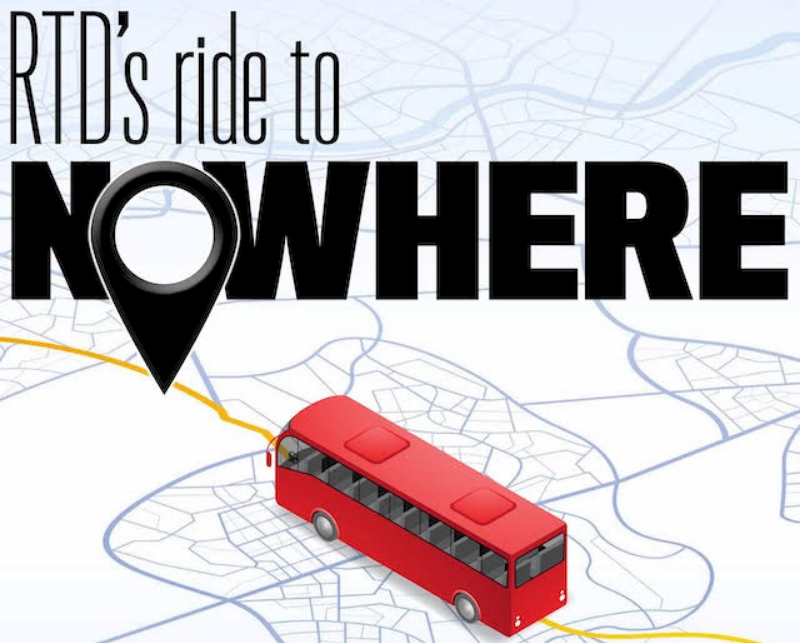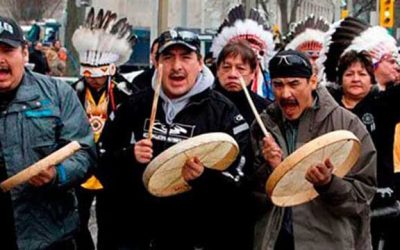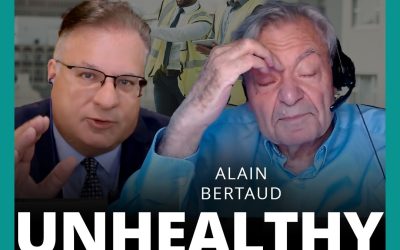The RTD ship is sinking and Colorado legislators want to fix it by rearranging the deck chairs. According to U.S. Department of Transportation data, RTD carried less than 64 percent as many riders in May 2024 as in May 2019, well below the 77 percent average for transit agencies nationwide. Meanwhile, driving has completely recovered as urban Coloradans drove 108 percent of pre-pandemic miles in May.
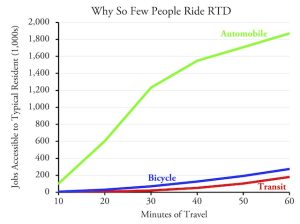
The latest University of Minnesota Accessibility Observatory data showing that Denver transit accesses far fewer jobs than autos and even fewer than bicycling over all trip lengths from 10 minutes to 60 minutes. This, I explain in the article, is why so few Denver-area residents ride transit
Many legislators’ proposed solution to RTD’s failure to recover from the pandemic was to take away the right of voters to select the agency’s board of directors. That’s breathtakingly inappropriate considering that there is no evidence that how transit agency boards are picked has any influence on ridership.
RTD’s fundamental problem is the same as almost every other transit agency in the nation, no matter how their boards are selected: an obsolete downtown-centric route system that doesn’t work for the vast majority of travelers.
An analysis of pre-pandemic census data found that transit carried 22 percent of downtown Denver workers. Yet only 2.6 percent of workers in the rest of the Denver urban area commuted by transit. Transit simply doesn’t work for 97 percent of people not going to or from downtown. Transit’s downtown focus made sense in 1900 when most Denver jobs were located downtown. That hasn’t been true for at least 75 years.
Only about 9 percent of the region’s jobs were in downtown Denver before the pandemic, and there are even fewer today now that many former downtown workers are working at home.
Like many other transit agencies, RTD compounded this problem by building expensive and obsolete transit systems that simply don’t work in modern, decentralized urban areas. In 2004, RTD promised that new light-rail and commuter-rail lines would significantly reduce congestion, yet that hasn’t happened.
At that time, 4.8 percent of Denver area commuters took transit to work. By 2019, RTD had spent $6.6 billion completing all but one of the planned rail lines. Yet the share of workers taking transit was exactly the same: 4.8 percent. Since the pandemic it has fallen to 2.5 percent.
Rail transit has been obsolete since 1927, when the Twin Coach company developed the first bus that was less expensive to buy and less expensive to operate, per seat-mile, than rail transit. This led more than 500 transit companies to convert all their rail lines to buses in just 10 years.
The so-called General Motors streetcar conspiracy, which began when GM bought several transit companies in 1937, was not a conspiracy to destroy streetcar systems. Instead, it aimed to get transit agencies that were already dismantling their rail systems to buy General Motors buses instead of Twin Coach buses.
General Motors and Twin Coach leaders knew that, aside from cost, buses have a huge advantage over rail transit: flexibility. If transportation patterns change (as they did after the pandemic), bus routes can change overnight while it takes years to plan and build new rail lines. If a bus breaks down, other buses can drive around it while a single railcar breakdown can disrupt an entire rail line for hours.
A bus corridor can also move more people per hour than any rail line.
True, a four-car light-rail train can hold 600 people, far more than any bus. Yet for safety reasons a light-rail track can move no more than 20 trains carrying a maximum of 12,000 people per hour. Portland has streets that can move more than 160 buses per hour.
Using articulated or “bendy” buses that can carry more than 100 people, buses on these streets can move more than 16,000 people per hour.
Istanbul has a bus corridor that moves more than 250 high-capacity buses carrying up to 30,000 people per hour. Bogota has bus lanes that can move 45,000 people per hour, more than the New York City subway, the highest-capacity rail system in the U.S.
Buses can move more people at higher speeds in greater comfort at a far lower cost than rail transit.
So why did RTD and so many other transit agencies build rail transit over the past several decades?
The simple answer is that transit today is 10 percent transportation and 90 percent political patronage.
The main supporters of rail transit are the companies that build it and the manufacturers that make the expensive vehicles that run on it.
Railcar manufacturer Siemens, for example, donated more than $100,000 to the 2004 FasTracks political campaign. RTD amply rewarded the German company for this by buying hundreds of millions of dollars worth of Siemens’ lightrail cars. RTD didn’t even allow any other company to bid on at least one of those railcar contracts.
Rail transit advocates claim that spending money on transit helps low-income people and reduces greenhouse gas emissions. Neither is true.
According to University of Minnesota researchers, the average Denver-area resident can reach more than three times as many jobs in a 20-minute auto drive as a 60-minute transit trip. RTD transit is so slow that people can reach more jobs on a bicycle than by transit for trips of the same duration.
Low-income people know that RTD doesn’t work for them. Census Bureau data show that less than 4.5 percent of Denver-area workers earning under $25,000 a year took transit to work in 2022 while more than 76 percent commuted by automobile.
Census data also show that, among Denver-area workers who live in households with no cars, 31 percent drove alone to work (mostly in employer-supplied vehicles) while only 26 percent took transit, with the rest carpooling, walking, or cycling. RTD’s downtown-centric system doesn’t even work for most people who don’t have cars!
Meanwhile, the sales taxes used to support RTD are highly regressive. That means that more than 95 percent of low-income people are disproportionately paying taxes to support a transit system they rarely if ever use. RTD does those low-income families more harm than good.
Nor does RTD save energy or reduce greenhouse gas emissions. Calculations using Department of Transportation data reveal that, before the pandemic, RTD buses and rail lines all used more energy per passenger-mile than the average SUV, and much more than the average car.
Colorado electricity comes mainly from fossil fuels, and both RTD buses and rail lines effectively emit more greenhouse gas emissions per passenger-mile than the average SUV. Lower ridership since the pandemic it made it even worse.
Urban planners and some Colorado legislators say that RTD is key to their plan to promote more compact development in the Denver urban area. That means building more four- to six-story “transit-oriented developments” near RTD transit stops.
One problem with this plan is that 80 percent of Americans, and probably more than 80 percent of Coloradans, would rather live in single-family homes than mid-rise apartments. But advocates say that compact development will reduce congestion and greenhouse gas emissions and provide more affordable housing.
These claims are just as untrue as similar claims made for rail transit.
Packing more people into a smaller area increases congestion, not reduces it. The three most congested major cities in America are also among the densest.
Nor is apartment living more climate friendly. Midrise construction uses more steel and concrete, generating far more greenhouse gases, per square foot, than building single-family homes. Department of Energy data also show that heating and lighting apartments uses more energy per square foot than single-family homes.
Far from making housing more affordable, mid-rise housing is far less affordable than single-family homes. Multi-level housing requires elevators, concrete fire barriers between floors, steel structural supports, and lobbies and hallways that are expensive to build but contribute nothing to living space. Developer Nicholas Arenson estimates such buildings cost three to four times as much per square foot as single-family homes.
Since mid-rise apartments are more expensive yet considered less desirable than single-family homes, Colorado has had to subsidize the construction of many such projects.
One way is through affordable housing funds provided to developers by the federal and state governments.
When such subsidies began in the late 1980s, most of the buildings were two-stories tall, keeping them affordable. Federal data show that subsidies in the form of low-income housing tax credits averaged less than $20,000 per unit in the Denver area. During the 2000s, building heights started creeping upwards, and subsidies rose to nearly $50,000 per unit.
In the last decade, most new Denver-area affordable housing has been in mid-rise or high-rise buildings.
Total subsidies have more than doubled since the 2000s, yet the number of affordable housing units built has declined by a third pushing the average subsidy to $140,000 per unit.
In just the past five years alone, the cost per affordable housing unit and per square foot have both grown by more than 50 percent.
The emphasis on mid-rise apartments cheats low-income people by producing less housing and cheats taxpayers by making their tax dollars less effective, all just to support urban planners’ transit-oriented dreams.
RTD is not a tool to socially engineer Coloradans to live in ways that they don’t want to live. Nor should it be a patronage program directing taxpayer dollars into the pockets of construction companies and manufacturers that made the right political contributions.
To return to its original goal of providing mobility to Denver-area residents, RTD must offer transit service to everyone in the region that is at least as good as the service it now provides to downtown Denver. Here is one way to do it. First, select eight or nine major economic centers that are geographically distributed throughout the urban area. These might include Aurora, Boulder, Broomfield, Centennial, downtown Denver, Lakewood, Northglenn, the Tech Center, and Westminster.
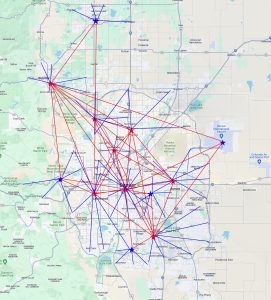
A transit plan for Denver: Red stars are primary transit centers, blue stars are secondary centers, red lines indicate non-stop bus routes, blue lines indicate local bus routes. Red and blue lines show origins and destinations, not detailed routes.
These economic centers tend to be located near freeways, and RTD should place a transit station close to the freeway ramps nearest each center. These stations need not be fancy: mainly a place to park four or five buses at once, a sign, and a bus shelter.
RTD should then run frequent-up to five times an hour–non- stop buses from every center to every other center. These buses will mostly travel on freeways so their average speeds will be much higher than light rail. A few secondary transit centers, such as the airport, Cherry Creek, Golden, Highlands Ranch, and Longmont, should also have non-stop buses running to two or three other primary centers.
Finally, RTD should radiate six to eight local bus lines from every center (except the airport) so that every neighborhood and corner of the region is served by a bus.
With about the same number of transit routes as RTD operates today, this network would allow people in every part of the region to reach any other part at speeds competitive with driving.
To speed rush-hour travel, CDOT should build express lanes on every crowded freeway like the ones on US 36 and I-25 so that buses, high-occupancy autos, and other drivers willing to pay a toll can travel at freeway speeds any time of day. By attracting vehicles away from other lanes, this will reduce congestion for everyone.
RTD’s existing rail lines could substitute for some of the non-stop buses, though intermediate stops should be closed to increase average speeds. Rail lines wear out after 25 to 30 years, and as they do RTD should replace them with buses rather than spend hundreds of millions of dollars rehabilitating them.
Without trying to social engineering how people live or spending much more than RTD’s current budget for transit operations, this system could serve people throughout the region as well as if not better than RTD currently serves downtown Denver. Denver-area residents who truly want a twenty-first-century transit system should ask their elected representatives on the RTD board to give them one.
First published here, August 18, 2024.
Randal O’Toole is a transportation policy analyst and author of Building 21st Century Transit Systems for Canadian Cities. (20 pages) March 12,2024.
Related Items:
Watch: Why are Buses Better than Rail Transit? – With Randal O’Toole, (51 minutes), April 23, 2024.
